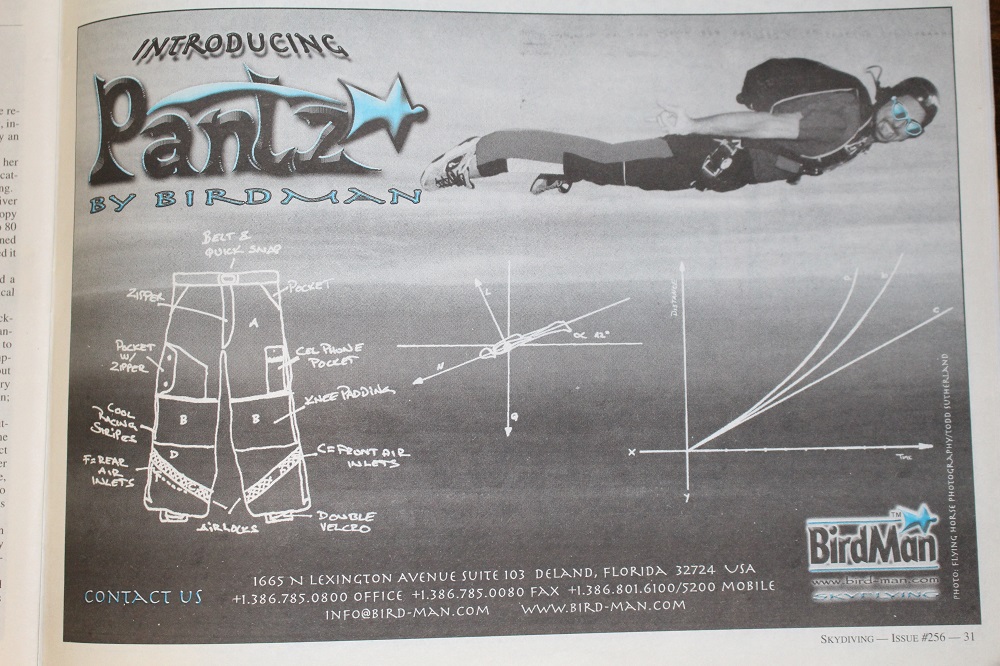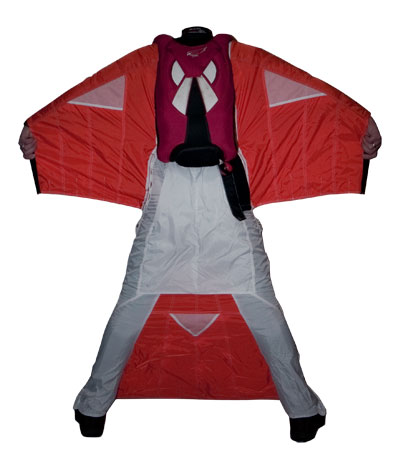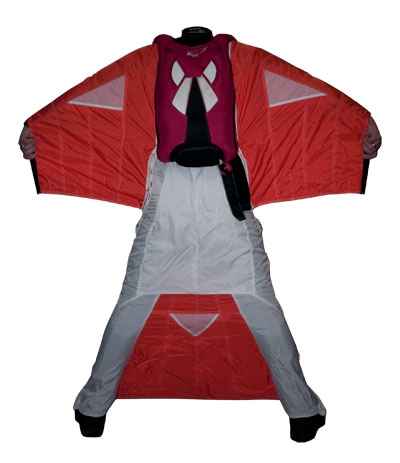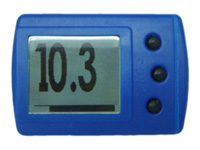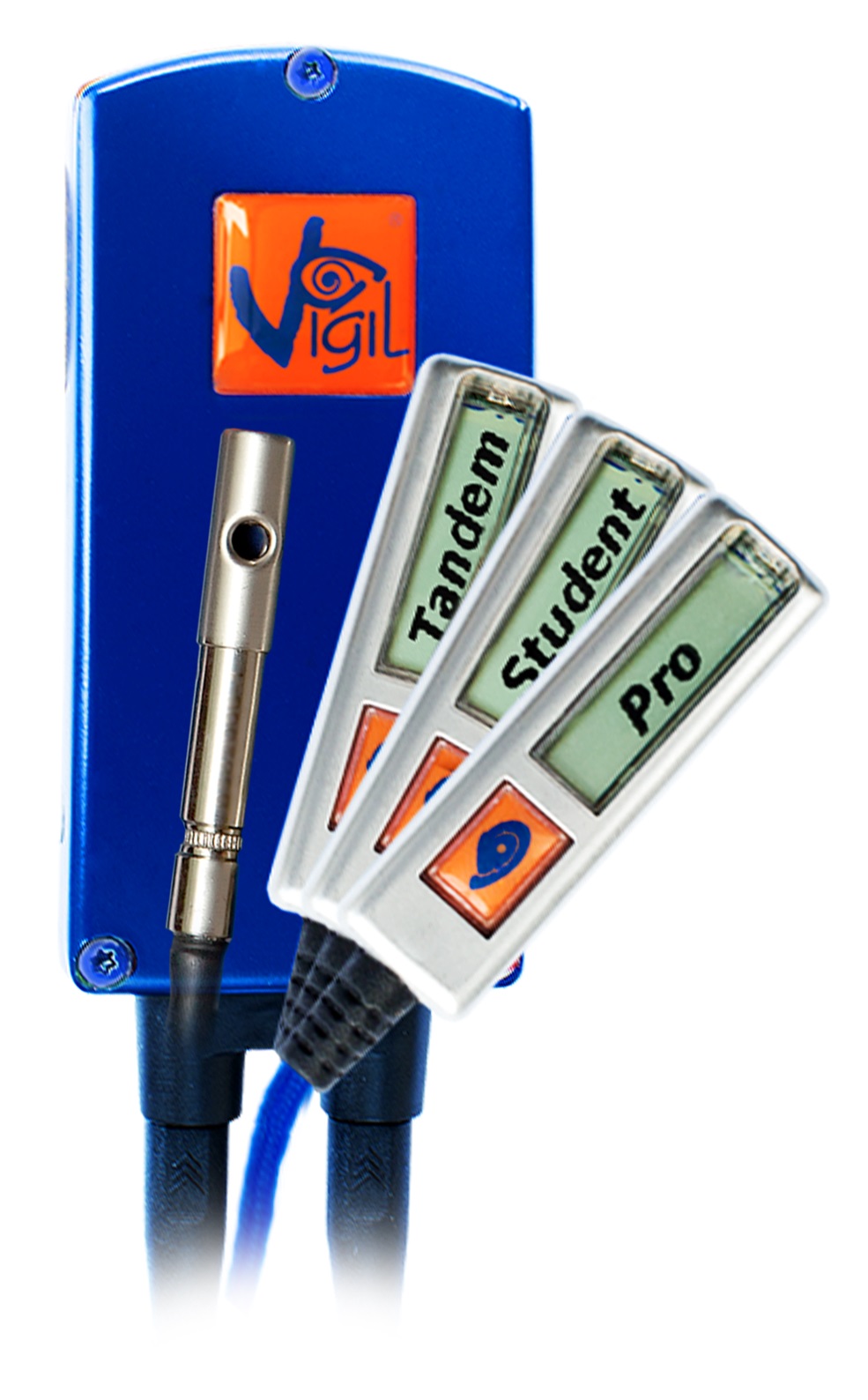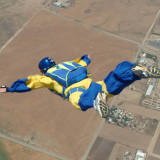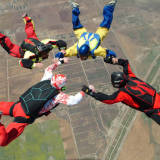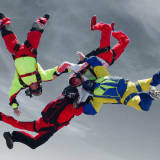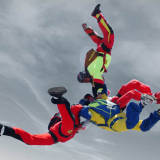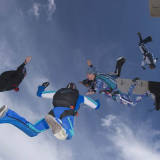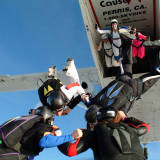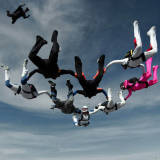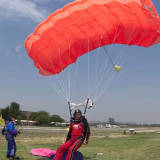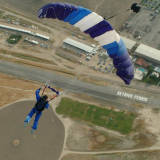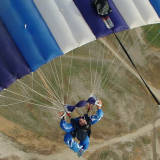-
Content
-14 -
Joined
-
Last visited
-
Days Won
1 -
Feedback
0%
Content Type
Profiles
Forums
Calendar
Dropzones
Gear
Articles
Fatalities
Stolen
Indoor
Help
Downloads
Gallery
Blogs
Store
Videos
Classifieds
Everything posted by admin
-
Federal Aviation Regulations covering skydiving operations within the United States were updated two years ago. One of the key changes allows the use of otherwise unapproved equipment by foreign parachutists. The new rule has received very little official explanation, and has created confusion among foreign jumpers and United States drop zones. Some drop zones treat the equipment of foreign visitors with open arms and an "anything goes" policy, while other drop zones strictly apply the relevant federal regulation (105.49). United States drop zones and visiting jumpers should understand what Federal Aviation Regulations actually require with regard to foreign equipment, and should be prepared to comply with those requirements. USPA has published a paper that outlines the specific regulation covering equipment use by visiting jumpers, and the complete regulation is readily available in the USPA SIM, and in Federal Aviation Administration publications. Based on the USPA report, and original research, it appears that in order for a foreign jumper to use unapproved equipment in the United States the following FAA standards apply: The equipment must be owned by the foreign jumper. The jumper can NOT be a citizen of the United States, or a resident alien. A dual citizen (example: Canadian/US) must comply with the United States standards. Either the reserve or container must be UNAPPROVED. If both components are TSO'd and can be used in the United States by a United States citizen, then United States standards apply. So, a French citizen jumping a Javelin and a PD reserve in the United States must comply with all United States regulations, including a 120 day repack by an FAA rigger, with a seal applied to the reserve. If the reserve OR the harness/container is NOT approved for use in the United States AND the equipment is approved for use in the jumpers home country, it can be used by the foreign jumper/owner in the United States under his home country rules. Understanding The Regulation: FAR 105.43 requires that a reserve parachute and the harness/container must be approved by the FAA (TSO'd), and that the reserve must have been packed within 120 days by an FAA certificated rigger. This part governs parachute systems that are approved (reserve and harness/container). FAR 105.49 allows a foreign parachutist to use his own unapproved foreign parachute system if it is packed "in accordance with the foreign parachutist's civil aviation authority…" and if the foreign parachutist is the owner of that equipment. This part applies only to foreign parachutists, and only to unapproved equipment. FAR 105.3 defines a foreign parachutist as "a parachutist who is neither a U.S. citizen or a resident alien and is participating in parachute operations within the United States using parachute equipment not manufactured in the United States." FAR 105.3 defines an approved parachute as "a parachute manufactured under a type certificate or a Technical Standard Order (C-23 series), or a personnel-carrying US military parachute…" The key term to understand is "unapproved foreign parachute system" The regulation that allows a foreign parachutist to use unapproved foreign equipment (105.49) is based on exemptions that had been granted under a previous version of part 105. The change to allow this use without an exemption was proposed and published in the Federal Register on April 13, 1999. In the preamble to the proposal the FAA stated the following: "The FAA proposes to permit foreign parachutists to conduct jumps in the U.S. using their own equipment provided that they use single-harness, dual-parachute systems which contain a non-Technical Standard Order (TSO) reserve parachute or a non-TSO'd harness and container…" The FAA repeated this position in the section-by-section discussion of the proposed changes under 105.49, saying" This proposed section addresses equipment and packing requirements for foreign parachutists. Only single-harness, dual-parachute systems which contain a non Technical Standard Order (TSO) reserve parachute or non-TSO'd harness and container would be allowed to be used in the United States…" The FAA received several comments about the proposed rule, but incorporated the original proposal into law with only limited changes to the specific labeling of the regulation. The final rule was published in The Federal Register on May 9, 2001, and became effective on July 9, 2001. Thus, the stated intent of the FAA is to exempt systems from 105.43 that are owned by a foreign jumper and are at least partially unapproved, but to require the 120 day inspection and repack by an FAA certificated rigger if the equipment is entirely approved for use in the United States. There is some confusion in the language between the country of manufacture, and approval (TSO), but it appears that the intent of the FAA is to require the standard 120 repack by a rigger if BOTH the harness/container and reserve are approved under the TSO process, regardless of where they were actually manufactured. Making Sense of The Regulation: The FAA appears to be saying that if BOTH the reserve parachute and the harness/container are approved in the United States, then the FAA has knowledge of the equipment and believes packing should comply with 105.43. If either the reserve or harness/container is NOT approved, then the FAA does not know enough about the equipment to form an opinion about maintenance or packing, and thus the FAA defers to the jumpers home county civil aviation authority, as listed in 105.49. What it Means: Foreign jumpers visiting the United States with a reserve and harness/container approved for use in The United States (TSO'd) should be prepared to comply with United States packing requirements, including the 120 day repack by an FAA certificated rigger. Drop zones should adhere to the foreign jumpers home country rules only if either the reserve OR harness/container is unapproved by the FAA, and the drop zone has a solid understanding of the rules issued by the foreign jumpers civil aviation authority. Many drop zones are not familiar with FAR 105.49, and very few drop zones have direct knowledge of the civil aviation authority requirements of other countries. Visiting jumpers can assist drop zone owners by having copies of their home country requirements written in, or translated to English. The drop zone is responsible for making sure unapproved equipment is in compliance with the civil aviation authority of the jumpers home country under 105.49(a)(3), so foreign jumpers should be prepared to explain their local regulations and show at least this level of compliance. All skydivers and drop zones should understand that a violation of Federal Aviation Regulations can be levied against the jumper, the pilot, the drop zone, or just about any other entity involved in the parachute operation. Information Resources: FAR Part 105 http://www.access.gpo.gov/nara/cfr/cfrhtml_00/Title_14/14cfr105_00.html USPA Skydivers Information Manual with all relevant Federal Aviation Regulations and USPA policies: http://www.uspa.org/publications/manuals.pdf/SIM.2003.pdf Notice of Proposed Rulemaking (Federal register): http://frwebgate.access.gpo.gov/cgi-bin/getdoc.cgi?dbname=1999_register&docid;=99-8753-filed Final Rule with Comments (Federal Register): http://frwebgate.access.gpo.gov/cgi-bin/getdoc.cgi?dbname=2001_register&docid;=01-11726-filed USPA White Paper on Foreign Parachutes Tom Buchanan is a Sr Rigger, S&TA at The Ranch Parachute Club and author of the book JUMP! Skydiving Made Fun and Easy.
-
Capewell Components LLC has received (3) reports from (3) customers of (4) ripcord pins that broke. All (4) pins were reported to have broken under very low force. All (4) pins are reported to have broken on the blade section of the pin, approximately 1/8” (3 mm) from the shoulder of the pin. Two of these ripcord pins that broke were supplied by Capewell as a completed ripcord assembly. Two of the ripcord pins that broke were supplied as pins to Capewell customers who then assembled the full ripcord. The (4) ripcord pins that broke were delivered to Capewell customers in the first half of 2002. Capewell has an on-going investigation to determine root cause. No root cause(s) has been determined to date. Affected Ripcord Pins are: MS70107 (angled), PS70107 (angled), 61C4304 (angled); 55A6480 (terminal) A defective pin could cause your parachute system to malfunction. Please download the complete service bulletin below which describes two MANDATORY tests. Either TEST 1 or TEST 2 must be performed prior to the next uyse of your system. Download Service Bulletin (pdf) Gear and Rigging Forum
-
The BirdMan Pantz are a revolutionary new skydiving pant design that allows you to achieve greater forward speed and lift. This is mainly because the Pantz have an air inlet system that lets air in causing the legs to inflate and become a larger, more rigid surface. This means more leg power for you. While the Pantz's specialty is going forward fast (meaning lift), they work great for sit and head down too. AFF and tandem instructors wanting more leg power also benefit from this design. Tandem instructors may want to take advantage of the “reinforced backside” option. This is an extra piece of Cordura that is sewn over the butt area for those intentional or not-so-intentional butt slide landings. The Cordura comes in black only. There are two versions of the Pantz to choose from: BirdMan Pantz (freefly) and BirdMan BASE Pantz. The freefly version has air inlets on the front and back of the lower leg area - for belly or backtracking. The BASE version has inlets on the front only but has additional inlets on the upper thigh for quicker inflation. They also have extra, heavy-duty fabric on the knee and a slightly higher waistband.
-
Like its predecessor, the Skyflyer, the Skyflyer.3 (or S3) is a wingsuit meant for experienced wingsuit flyers. What makes the S3 different, though, is that both the arm and leg wings are slightly longer. The leg wing on the S3 is also noticeably wider than on the Skyflyer, which has a somewhat narrow leg stance. The wider leg stance on the S3 feels more comfortable in flight and it offers greater surface area. The wing profile has also changed. The ribs inside the arm and leg wings of the S3 are smaller to create a flatter wing (less drag). These factors have improved the aerodynamics of the suit making it faster forward and slower vertically than the Skyflyer.
-
SKYFLYER is a completely new type of wingsuit made by the creators of BirdMan™ wingsuits. SKYFLYER is a truly high performance third generation wingsuit, that is easy to wear and use, and naturally also looks good both on the ground and in the air. The performance of the SKYFLYER is based upon improved aerodynamics and reduced drag. Less drag means more speed. Increased speed and a greater surface area with the latest aerodynamics means more lift. During our test flights we have reached temporary vertical speeds of 8 m/s or 27 km/h (18 mph). Flying a high performance wingsuit like SKYFLYER is a true flying experience and gives you satisfaction beyond imagination. We have tested the suit over 9 months and finally we believe that some of us are ready for it.
-
In May 1998 we released the world's first 27-cell crossbraced canopy in the form of the Icarus Extreme VX. At that time we had developed and produced the world's most powerful swoop machine to date, but the VX exhibited an opening sequence that virtually limited it to being a swooping canopy, and hardly acceptable as a terminal velocity skydiving canopy. During the four year period following our release of the Icarus Extreme VX, we continued to develop and refine the next generation prototype of a 27-cell crossbraced canopy, resulting in the Xaos-27.
-
The death of a skydiver whose parachute failed to open over an airfield in North Lincolnshire is now being treated as murder. Stephen Hilder, who was 20, fell 13,000 feet to his death while he was taking part in a jump, at Hilbaldstow Airfield, on Friday. Detective Superintendent Colin Andrews, who is leading the investigation, said parts of Mr Hilder's kit had been tampered with, so neither his main parachute nor his reserve could open. He said "It is an absolute fact that both parachutes were deliberately tampered with and on the basis of that we have to strongly suspect that murder was the motive." Cords cut Mr Hilder, an officer cadet who had completed more than 200 parachute jumps, was found dead in a cornfield. His family, from Hereford, paid tribute to a "wonderful son and brother." Humberside Police carried out forensic tests on the parachute pack used by Mr Hilder and say the cord which deployed the main chute and the strapping to the reserve chute had been cut. DS Andrews said: "We are entirely satisfied that Stephen's parachute was deliberately tampered with and what we need to find out is who did that and for what reason." He said Mr Hilder was an experienced skydiver who was safety conscious. Video footage "It is a tragic waste of a young man with a bright and promising future and it is a particularly horrendous way to die," he said. The parachute equipment had been checked on Wednesday - the day the jump had originally been due to take place - and "stored in good working order". Mr Andrews said the parachute was kept in a store that was locked overnight but was left open in the day. Police say a fancy dress party was held at Hiblestow Airfield on the evening of 3 July which was attended by a number of people, including Mr Hilder. Many of the people who attended took video footage and photographs of the party and police are appealing for them to get in contact. They are also examining video footage of the actual fall which was filmed by people at the site.Mr Hilder was one of eight people who took part in the jump but no one else was injured. 'Wonderful son' The airfield has re-started parachute jumping and security has been reviewed. Meanwhile, a skydiving expert said it would be relatively easy to sabotage a parachute jump. Dave Hickling, chief instructor with the British Parachute School based at Langar Airfield near Nottingham, said: "You don't need a lot of knowledge to cut things. "Once you have been on a basic parachute course and you have seen how the parachute deploys, you would have enough knowledge." In a statement Mr Hilder's family said: "He was a wonderful son and brother, whose place in his very close-knit family will never be filled." skydiving had "quickly become a total passion" for him after he took it up at Bristol University, they said. He continued skydiving when he transferred to the Royal Military College of Science at Shrivenham, Oxfordshire, last year, where he helped revitalise the college's skydiving club. Multiple injuries "He made over 200 jumps in the UK, France and South Africa, including freefall and formation diving and his absolute love for the sport never faded," they said. Mr Hilder was born in Hereford and went to school there before studying for his A-levels at Welbeck College. The statement continued: "Throughout his time with the Army he kept his love of theatre and music. "He was a talented percussionist and amateur actor, who loved reading and listening to rock music. "Steve had a tremendous sense of humour and made friends wherever he went." A post mortem found Mr Hilder died of multiple injuries.
-
The Altimaster Neptune was designed in response to requests from pond swoopers wanting a waterproof altimeter, from AFF instructors wanting a digital readout, from jumpers who wanted an easier way to program their digital instruments. Neptune is no longer manufactured, but still serviced by Alti-2 subject to availability of parts. Neptune2 (now available only as Ruggedized Neptune2) is the generational replacement.
-
The VIGIL® is a maintenance-free multi-mode activation device that outperforms old-style AAD’s. The VIGIL® comes - In an attractive and useful carrying case - With a free Cutter replacement after life saving! The VIGIL® gives you High-reliability in an Ultra-compact Unit. Ergonomic stainless steel housing High-reliability alpha-numeric display Amplifying lens Sealed mechanical switch 2 wire technology 1 flexible connecting wire Kevlar reinforced cabling – high traction resistance Wire-controller connection resists up to 50 kg traction Bidirectional I.R. Download LED



